Categories
New Blog
Tags
When we talk to TT bike, the question of whether to use a road bike or a triathlon time trial (TT) bike is a common one among triathletes.Both types of bikes have their own unique advantages and disadvantages, and the best choice ultimately depends on your specific needs and preferences.Here we will discuss the differences between a road bike and triathlon TT bike and which one is best for your race biking.
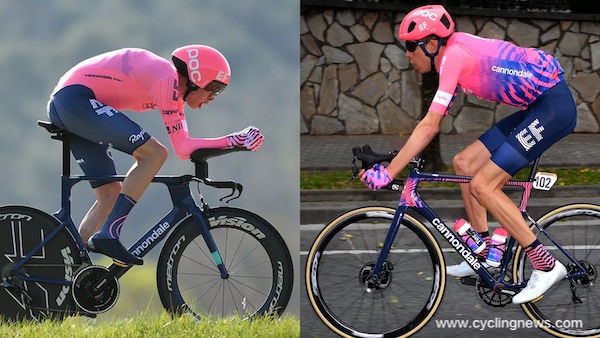
Definition of TT bike vs road bike:
A time trial bicycle is a racing bicycle designed for use in an individual race against the clock. Compared to a road bike, a time trial bike is more aerodynamic, has a shorter wheelbase, and puts the rider closer to the front of the bicycle. It may have either a solid disc or spoked wheels.
A road bike is a traditional bicycle design that is built for speed and efficiency on paved roads. They typically have a lightweight frame, narrow tires, and drop handlebars that allow you to switch between multiple hand positions. Road bikes are great for long-distance riding and can be used for both training and racing and even commuting. They are also versatile and can be used for other types of cycling, such as touring or recreational riding.
The major difference between the triathlon bike and the traditional road bike lies in the geometry of the bicycle frame. Specifically, the seat tube angle. The seat tube is the long tube extending from the bottom bracket upward towards the seat. And the angle of this tube relative to a horizontal line drawn at the bottom bracket represents your seat tube angle (take a look at the diagram below).
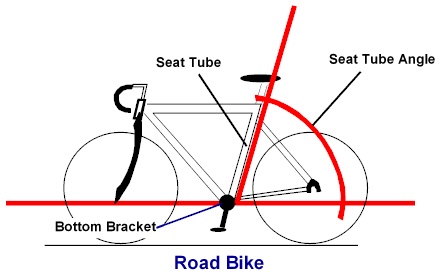
It means you will be more upright when riding and more often than not more comfortable. But you will be less aerodynamic.
The main characteristics of a road bicycle include:
Xiamen Tour de Cycling Industry&Trade Co.,Ltd. is bicycle frame manufacturer in China,we can supply many kinds of carbon road bike frames, such as carbon aero frame,carbon fibre racing bike frames, full carbon gravel frameset with customize painting and decal. welcome to contact us to get quotation.
It’s important to note that these characteristics make road bikes more versatile than TT bikes, and more suitable for long distance comfortable riding, touring, and recreational riding, as well as for road racing.
TT Bike
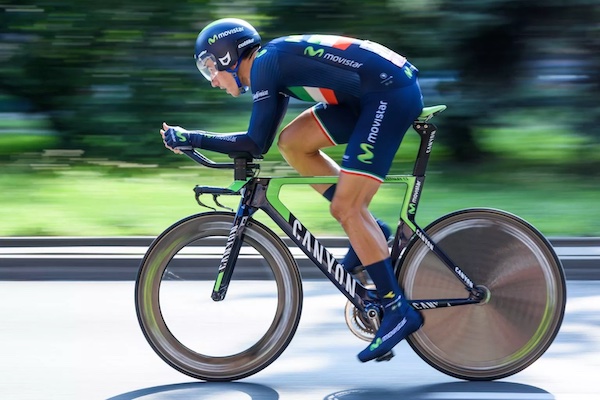
On the other hand, a triathlon TT bike is specifically designed for triathlons, with an emphasis on speed and aerodynamics. These bikes have a more aggressive geometry, which puts you in a more forward-leaning position, and feature aero bars, which allow you to rest your forearms on the bike and reduce wind resistance. They also have a more aerodynamic frame design, which helps to minimize drag and increase speed.
For a triathlon bike, the seat tube angle is typically 76-78 degrees. A good bit steeper than the 72-degree angle found on most traditional road bikes. The steeper angle places the rider further forward on the bike creating a more aerodynamic body position. (See diagram below)
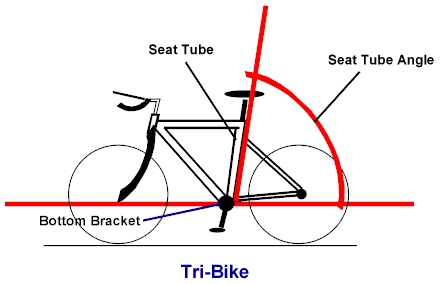
The main characteristics of a triathlon time trial (TT) bike include:
Geometry
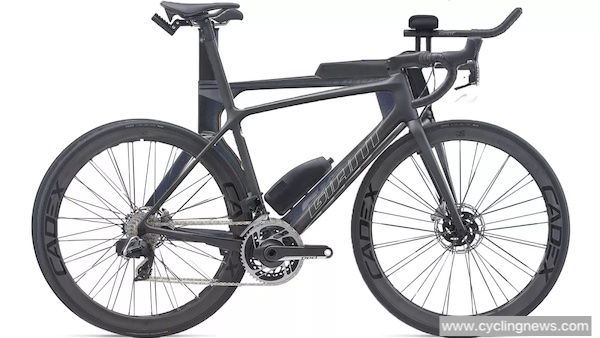
The geometry of road and time trial bikes are vastly different as they seek to achieve divergent body positions on the bike. With that, working out what size TT bike you may need is quite a bit more involved than road bikes and cannot be distilled to recommendations on top tube length based on height — rider height is only one variable, and limb length, torso length, and flexibility play a role in what size TT bike frame you should be on.
For a good starting point, we’d recommend looking at a TT frame that has a reach roughly 2cm shorter than your road bike, which typically means going down a size. This, of course, does not take into account the cockpit dimensions or any irregularities in your leg to torso length ratio.
Typically road bikes are dolled out based on top tube length, which serves as a pretty reliable indicator of whether a frame will fit someone. Of course, establishing your reach size is better but is not as important as it is to a TT frame.
Position
Even to the casual observer, the riding position on a time trial bike and a road bike is quite different. These body positions are so different that they call on slightly different muscle groups.
A study published in the European Journal of Sports Science in 2018 found significant variations in power output between rider’ upright and aero positions over TTs lasting three, five and 12 minutes.
Another 2015 study published in the Scandinavian Journal of Medicine and Science looked into the effect that the TT position had on muscle activation and crank torque. Researchers found that dropping the torso angle caused the gluteus maximus to contract significantly later in the pedal stroke, and for a shorter duration. This lead to a 2-3-per cent reduction in power output.
On a time trial bike, there are two hand positions, on the base bars or on the extensions. The base bars are where the brakes are located and are usually where the rider will place their hands while cornering, as it’s difficult to create leverage over the front wheel on the extensions.
With arms on the forearm pads and hands on the extensions, the rider’s body will be hunched over, vastly reducing the surface area that is exposed to the wind. It’s here a time trialist hopes to spend the majority of the time during an event, hence why the main shifters are located at the ends of the extensions — though, with electronic drivetrains, satellite shifters can be added to the base bars too.
On a road bike, there are three hand positions, the tops, hoods and drops. In previous years, riders have also been able to drape their hands over the tops and adopt a TT position; however, the UCI has put the kibosh on that from 2021 onwards.
The drops and hoods allow a rider to get their weight over the front wheel for control and bend at the elbows to adopt an aero position, where the brakes and shifters are accessible. The tops are more or less for cruising along, and from here, the brakes and shifters are out of reach.
Wheels and tyres
Road and time trial bikes can run the same wheels. Depending on whether the bike has rim or disc brakes, the frames will have the same hub spacing, use the same size rotors, and similar - if not the same - cassettes.
The real difference in the wheels you would run on a TT bike vs a road bike is rim depth. There are very few instances on a road bike where you would ever pop a disc-wheel between the chainstays; however, they are commonplace on time trail bikes.
Whereas it’s uncommon to see wheels deeper than around 65mm in the front of a road bike, 80mm rim or even tri-spoke wheels are a regular occurrence on time trial bikes.
NB: The dual meaning of the word 'disc' can cause confusion. A disc wheel is a solid wheel without spokes, usually found on the rear of time trial bikes. A disc brake wheel is any wheel that has been built to be used with disc brakes. A disc wheel designed for use with disc brakes is commonly referred to as a disc disc wheel.
Road and time trial tyres are technically the same; however, TT-specific tyres do exist, like the Schwalbe Pro-One TT; the difference being they ditch the breaker strip and use a lighter casing in search of less weight and rolling resistance.
While recreational road riders are gravitating towards 28mm and even wider tyres, you probably would find anything wider than a 25mm casing on a TT bike as most wheels nowadays are aero-optimized around that size casing.
Drivetrain and brakes
While TT bikes will have specific shifters, the derailleurs are the same as you’d find on a road bike. Though the gearing ratios will be a bit different.
If using a 2x system (two chainrings at the cranks), there will be plenty of riders that will run the standard 11-28T cassettes commonly found on their road bikes, though some will opt for 11-25 or even 11-23 to reduce the size of the steps between each cog. On the front, riders will go bigger than the 53/39T combo that has become so popular and we’ve seen some pros go as big as 60t so they don’t spin out at the higher speeds achievable in a time trial.
However, some TT riders are opting for 1x systems, as it removes the front derailleur, which in theory should reduce drag and eliminates the possibility of dropped chains. With a wide range of cassettes readily available, you can achieve the same range as 2x, but the steps between each gear are bigger. That said, on a course where you wouldn’t be using the little ring in the first place, there aren’t many downsides to a 1x system.
When it comes to brakes on time trial bikes, they are available in both rim and disc brake varieties, the same as road bikes. However, rim brakes on rime trial bikes are typically some sort of integrated proprietary unit designed not to add any drag, which often comes at the cost of power and modulation. To put it bluntly, they are usually terrible.
While the addition of disc brakes to time trial bikes has provided as much if not more controversy than road bikes, they will actually slow you down, and aerodynamicists are getting pretty good at nullifying any additional drag a disc calliper may have caused.
Cockpit
Time trial and road cockpits could not be more different from one another. If you’re reading this, you probably know what road bike handlebars look like, so we're not going to go into too much detail on that.
TT bars are made up of two distinct sections, the base bars, and the pads and extensions. The base bars are where the brake levers are located, and usually, measure 40cm across regardless of bike and rider size. Riders will grab the base bar when they are negotiating corners, and turning from the extensions is difficult -possibly even dangerous depending on the corner.
Below TT carbon handlebar is our hotsale time trial carbon handlebar which match our TT47 time trial(TT) bike disc brake frameset together.
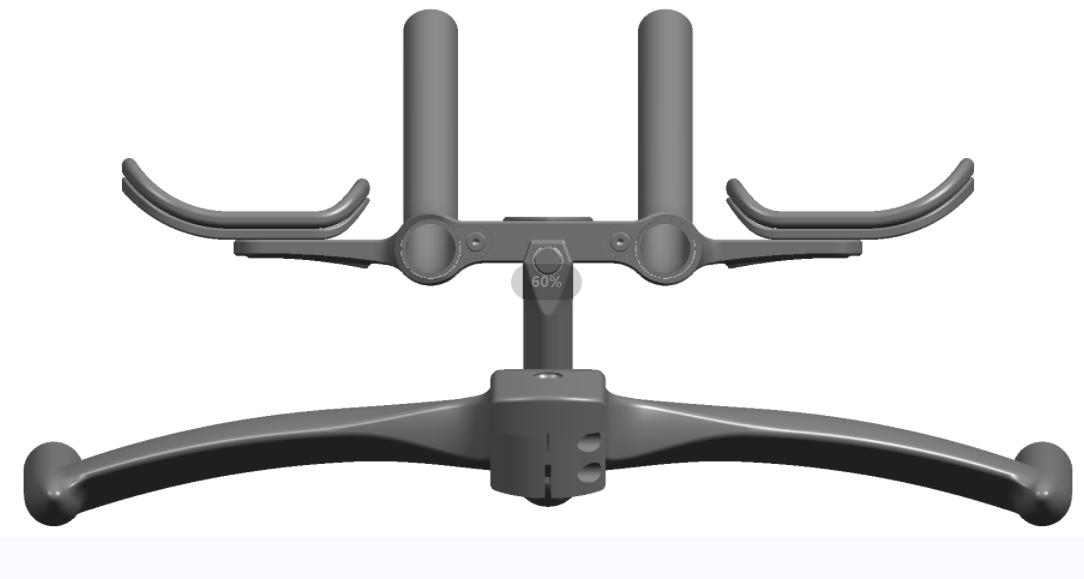
Outfront are the handlebar extensions (commonly known as 'aero bars', but sometimes also 'skis') which will also house the shifters and just above the base bars are the padded forearm rests, which support the rider’s weight when they are tucked.
For those looking to add this TT extension to their road bike, clip-on aero bars provide a solution, essentially adding this top section onto the tops of a set of normal road drop bars.
While the bullhorns are more or less fixed, the pads and extension are both adjustable and play a big role in how the rider sits on the bike. Riders will spend countless hours moving their pads and extensions a few millimetres at a time in search of that goldilocks position they can maintain for an extended period while also producing power. Adjusting a TT cockpit is also quite an involved process, and something as simple as adding a headset spacer can take half an hour or more.
At the highest level, we are beginning to see some riders with 3D printed aero bars that integrate perfectly into their position and are faster in the wind tunnel than your standard pad and extension setup — they also cost as much as a mid-level TT bike.
What Bike is Best for You?
A road bike is a versatile option that can be used for training and other types of cycling, while a triathlon TT bike is specifically designed for speed and aerodynamics four use in triathlon races and time trails.
You should consider your own needs, preferences, and goals when choosing between these two types of bikes. What is your key race in the season? What distance is it and what is the bike course profile? What is your budget?
A compromise could be to fit clip-on tri bars to your road bike to “get aero” in your next race but check your race rules to see if they are allowed in your specific race.